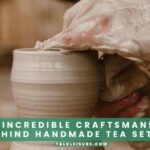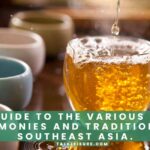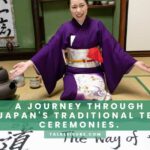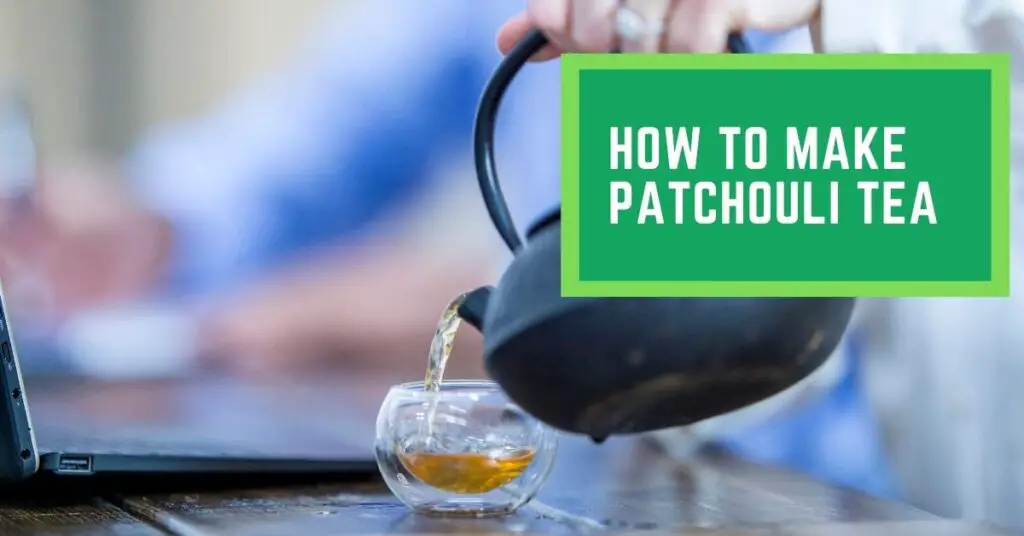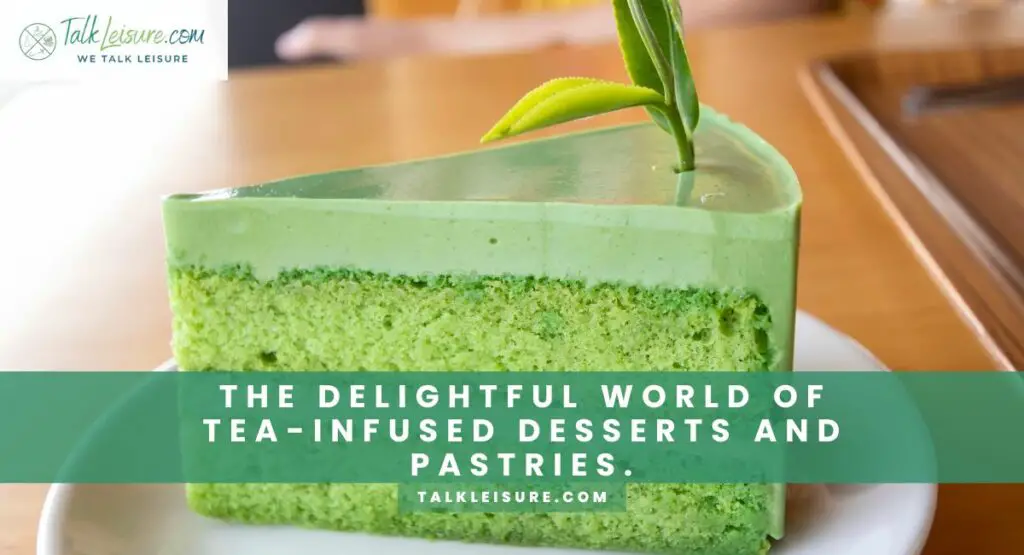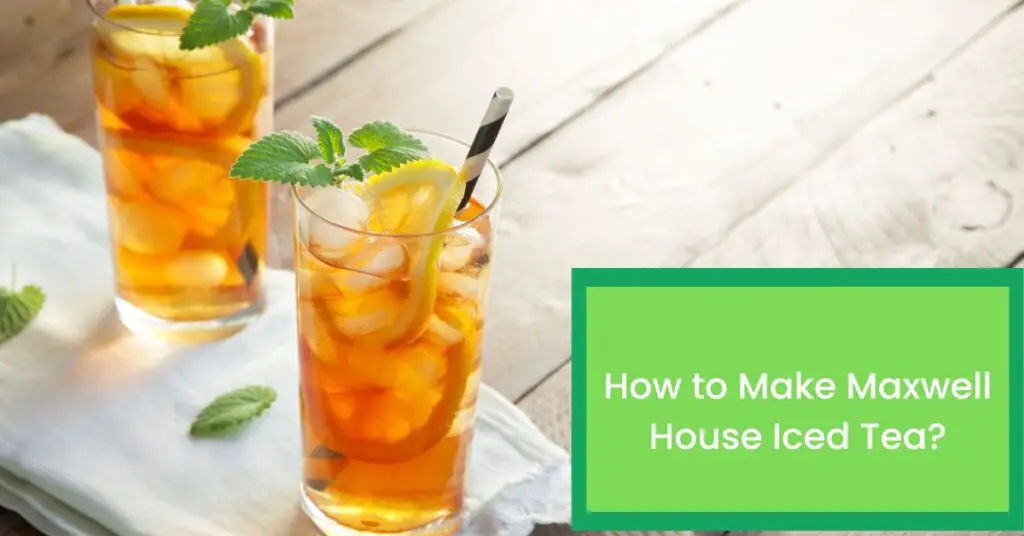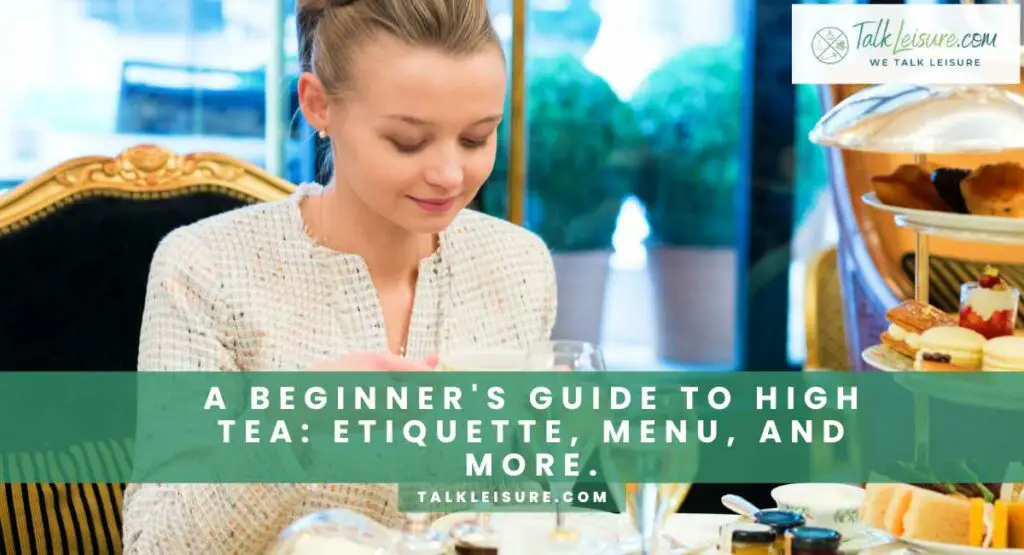Welcome to a world where tea transcends beyond a mere beverage, becoming a symphony of artistry, culture, and tradition. In this journey, we’ll unravel the stories behind the world’s most exquisite tea sets.
From the delicate porcelain of ancient China to the ornate grandeur of Russian samovar sets, each piece is a testament to the craftsmanship and history that grace our tea ceremonies.
Join me as we explore the beauty that resides in the hands of artisans across the globe, turning a simple brew into an experience steeped in elegance and wonder. Sip, steep, and embark on this enchanting tour of tea sets. 🍵🌏
Also read: The incredible health benefits of different types of tea.
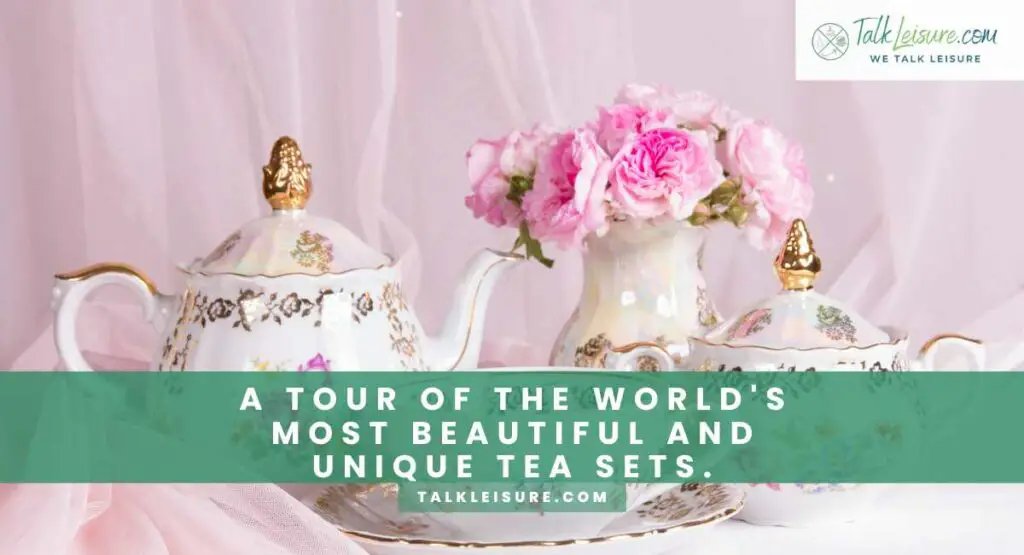
Stroll Through History: The Evolution of Tea Sets
Tea sets, like time travelers, carry with them the tales of centuries past. Their evolution is a tapestry woven with threads of culture, craftsmanship, and human ingenuity. Let’s embark on a journey through time, starting with the ancient roots of these cherished vessels.
Ancient Origins: Where it All Began
Tea sets trace their lineage to ancient China, where tea drinking was elevated to an art form. During the Tang Dynasty (618–907 AD), porcelain wares adorned imperial courts, setting the stage for the tea sets we cherish today. The delicate ceramics were not just vessels; they were reflections of a society’s sophistication.
The Flourish of Dynasties: China’s Influence Spreads
As dynasties rose and fell, so did the artistry of tea sets. The Song Dynasty (960–1279 AD) introduced celadon glazes, a subtle jade-like hue that adorned porcelain. Ming Dynasty (1368–1644 AD) tea sets boasted intricate blue and white designs, capturing the essence of the era.
A Japanese Aesthetic: Zen and Simplicity
In Japan, tea sets have found their own path to perfection. The revered tea ceremonies, or Chanoyu, celebrated the beauty of imperfection and simplicity. Japanese artisans crafted tea sets with zen-like precision, creating a harmonious marriage of form and function.
From Chaiwallahs to Palaces: India’s Chai Culture
In India, tea sets are a testament to the vibrant chai culture. From bustling markets to regal palaces, the ritual of tea is celebrated. Clay chai cups, known as Kulhads, symbolize sustainability and tradition, adding a rustic charm to the act of brewing.
English Elegance: Bone China and Sterling Silver
The English elevated tea-drinking to a refined art. Bone china tea sets, with their translucent beauty, graced afternoon teas. Sterling silver sets, a mark of opulence, added a touch of aristocracy to Victorian gatherings.
From Samovars to Gzhel: Russia’s Grandeur in Tea
In Russia, tea sets were more than just vessels; they were expressions of opulence. Samovar sets, with their grandeur, played a central role in Russian hospitality. Gzhel porcelain added an intricate beauty, bearing witness to Russia’s artistic prowess.
As we trace the footsteps of these tea sets through history, we’ll discover the diverse cultures, traditions, and innovations that have shaped them. Join me in the next section as we embark on a visual tour of the most enchanting tea sets from across the globe.
Also read: A beginner’s guide to high tea: Etiquette, menu, and more.
The Most Renowned and Beautiful Tea Sets from Around the World:
- Ming Dynasty Blue and White Porcelain Tea Set (1368–1644, China)
These are considered some of the most exquisite tea sets in history. They feature intricate blue paintings on white porcelain and are highly sought-after by collectors.
- Imari Porcelain Tea Sets (Edo period, Japan)
Imariware is known for its vibrant colors and intricate designs. The red, blue, and gold patterns on white porcelain are a hallmark of this style.
- Yixing Clay Teapot (Ming Dynasty, China)
These unglazed clay teapots are known for their natural, earthy colors and fine craftsmanship. They are highly valued for their ability to enhance the flavor of tea over time.
- Fabergé Imperial Lilies of the Valley Tea Set (Late 19th century, Russia)
This set, created by the House of Fabergé, is a masterpiece of Russian craftsmanship. It’s made of silver and enamel, with delicate lilies of the valley as the central motif.
- Meissen Porcelain Swan Service (18th century, Germany)
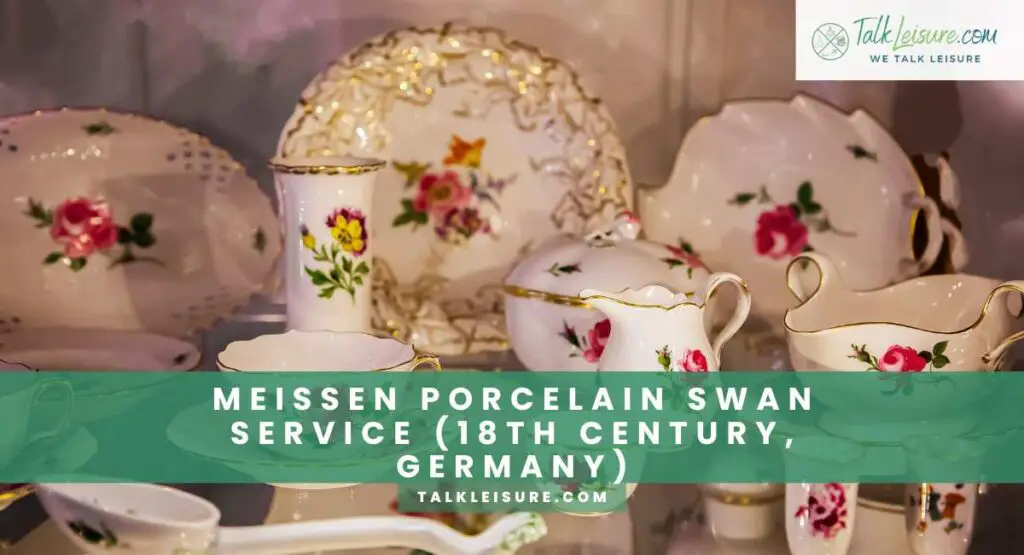
Commissioned by Augustus III of Poland, this lavish tea service features swan-shaped handles and intricate hand-painted designs. It’s a prime example of Meissen’s exceptional porcelain work.
- Sevres Porcelain Tea Set (18th century, France)
Sevres porcelain is renowned for its soft, pastel-colored glazes and delicate floral motifs. Sets from this period are considered some of the finest examples of European porcelain craftsmanship.
- Satsuma Ware Tea Sets (Late 19th–early 20th century, Japan)
Satsuma ware is characterized by its finely detailed, hand-painted scenes and rich, creamy glaze. These sets often feature scenes from Japanese folklore.
- Herend Rothschild Bird Tea Set (19th century, Hungary)
This famous Herend pattern showcases a beautiful aviary scene with colorful birds and butterflies. It’s a testament to the high-quality craftsmanship of Herend porcelain.
- Royal Worcester Raised Gold Demitasse Set (19th century, England)
Known for their mastery of the gold relief technique, Royal Worcester created this set with raised gold accents that add an opulent touch to the bone china.
- Minton Majolica Tea Set (19th century, England)
Majolica is known for its colorful, lead-glazed pottery. This Minton set is a stunning example, featuring intricate floral patterns and relief work.
Remember, the beauty of a tea set often lies in its craftsmanship, cultural significance, and the stories it carries through time. Each of these sets has its own unique charm, making them some of the most beautiful in the world.
Also read: The art of the perfect brew: How to steep your tea for maximum flavor.
Unique and Distinctive Tea Sets from Around the World:
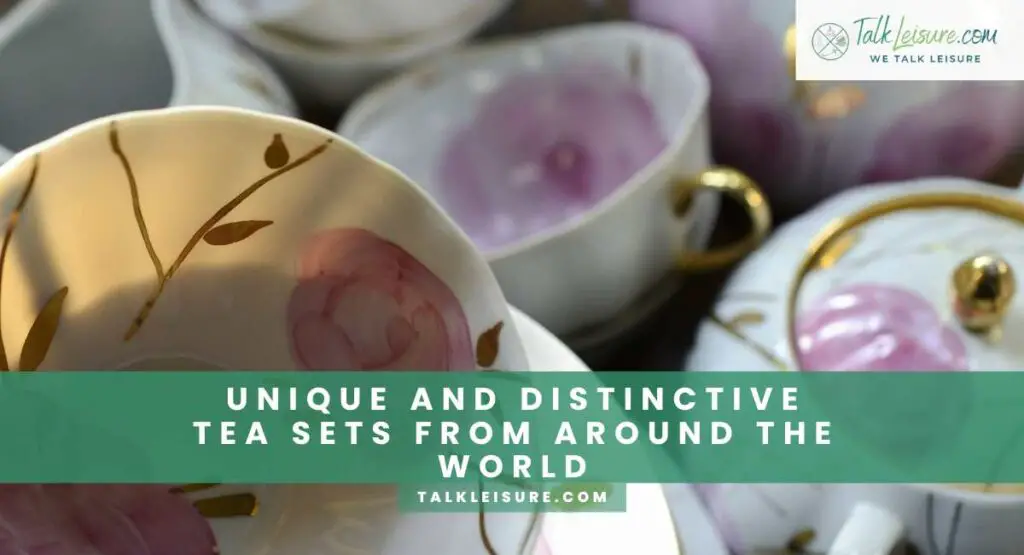
- Russian Imperial Lomonosov Porcelain Tea Set (Russia)
These sets are known for their opulent designs and intricate hand-painted details. They often feature vibrant colors and gold accents, showcasing the craftsmanship of the Imperial Porcelain Factory.
- Tetsubin Iron Tea Sets (Japan)
Tetsubin sets are made of cast iron and are known for their rustic, traditional appearance. They often come with a teapot, cups, and a trivet and are prized for their ability to enhance the flavor of the tea.
- Marble Tea Sets (India)
Carved from natural marble, these sets exude elegance and luxury. They often come with matching cups and saucers, each piece showcasing the unique patterns of the stone.
- Kutani Ware Tea Sets (Japan)
Kutani ware is characterized by its vibrant colors and intricate hand-painted designs. These sets often depict scenes from nature, folklore, or historical events.
- Gongfu Cha Tea Sets (China)
This traditional Chinese tea set is designed for performing the Gongfu Cha ceremony, a highly ritualized method of preparing tea. It includes a clay teapot, a tea pitcher, cups, a brewing tray, and other accessories.
- Majolica Ceramic Tea Sets (Portugal)
Majolica pottery is known for its vibrant glazes and intricate relief work. Portuguese majolica tea sets often feature bright colors and whimsical designs.
- Moroccan Tea Sets (Morocco)
Moroccan tea sets, used for the traditional mint tea ceremony, are typically made of brass or silver. They consist of a teapot, glasses, and a tray, often adorned with intricate geometric patterns.
- Art Nouveau Tea Sets (Europe, late 19th–early 20th century)
During the Art Nouveau period, tea sets took on organic, flowing forms with intricate floral and nature-inspired designs. These sets are a testament to the artistic movement of the time.
- Eggshell Porcelain Tea Sets (China)
As the name suggests, these sets are incredibly delicate and thin, resembling the fragility of an eggshell. They often feature hand-painted designs and are considered highly collectible.
- Bodum Assam Glass Tea Set (Denmark)
This modern set is made from heat-resistant borosilicate glass, allowing you to watch the tea leaves unfurl as they steep. It includes a teapot, cups, and a stainless steel infuser.
Each of these tea sets possesses a unique quality that sets it apart, whether through its material, craftsmanship, or cultural significance. They offer a glimpse into the rich diversity of tea culture around the world.
Chinese Tea Sets: Porcelain Masterpieces
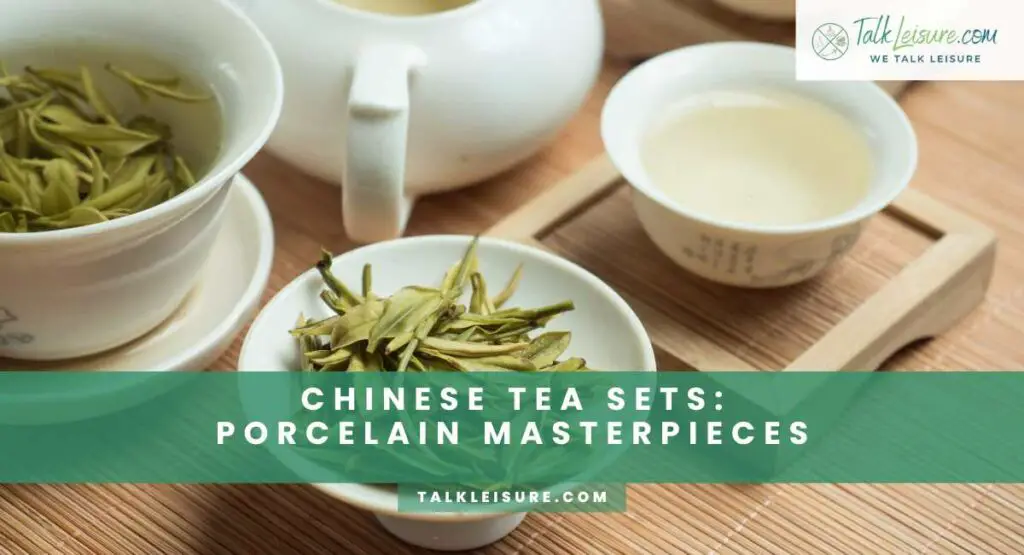
China, the birthplace of tea, is also the cradle of exquisite tea sets. Here, porcelain is transformed into delicate vessels that not only brew tea but also tell stories of dynasties and traditions.
Jingdezhen Ware: The Porcelain Capital
Nestled in the heart of China, Jingdezhen has been crafting porcelain for over a thousand years. Its porcelain, often referred to as “white gold,” is celebrated for its purity and translucence. Tea sets from Jingdezhen are renowned for their intricate designs, ranging from classic blue and white patterns to vibrant, hand-painted scenes.
Yixing Clay Teapots: Nature’s Gift
In the Jiangsu province of China lies Yixing, a region revered for its unglazed purple clay. Yixing teapots are a marriage of art and function. Their porous nature absorbs the essence of tea, enhancing the flavor with each brew. Crafted by master artisans, each Yixing teapot is a unique piece, bearing the mark of its creator.
Gaiwan Sets: Artistry in Simplicity
The Gaiwan, a classic Chinese tea set, embodies simplicity in design. Comprising a lid, bowl, and saucer, it allows for the full sensory experience of tea. Gaiwans are often adorned with elegant patterns, showcasing the finesse of Chinese porcelain craftsmanship.
Chinese tea sets are not mere vessels; they are an ode to a culture deeply intertwined with the art of tea. In the next section, we’ll venture into the Land of the Rising Sun, exploring the Zen aesthetics of Japanese tea sets.
Japanese Tea Sets: Zen Aesthetics of the Way of Tea
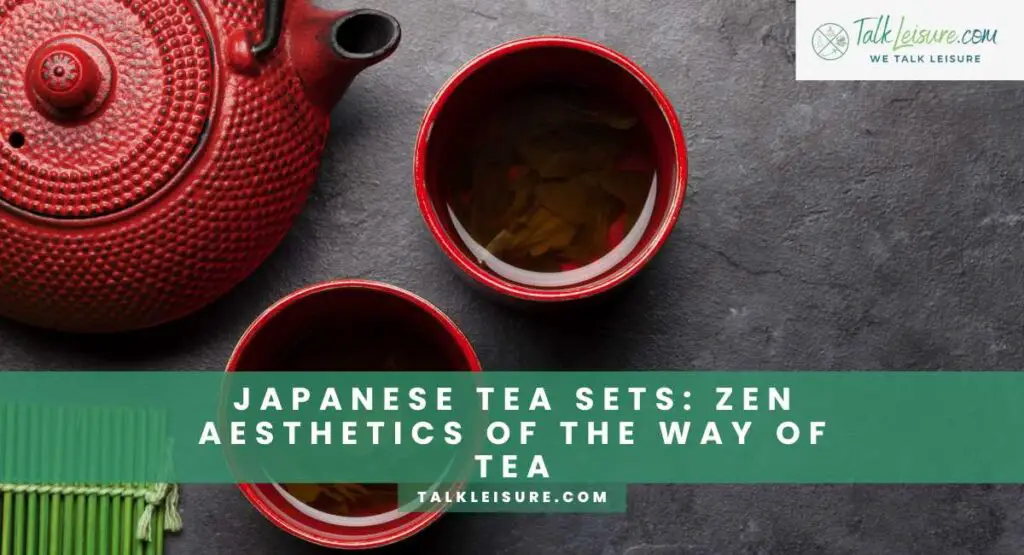
In Japan, tea is not just a drink; it’s a spiritual journey, an art form known as Chanoyu, or the Way of Tea. This reverence for simplicity and harmony is reflected in the tea sets they craft.
Matcha Bowls (Chawan): Harmony in Every Sip
Chawan, the heart of Japanese tea ceremonies, are handcrafted bowls designed for whisking matcha. Each bowl is a work of art, bearing the signature of its maker. The glaze, shape, and texture are meticulously chosen to enhance the experience of the vibrant green tea.
Kutani Ware: Colors of Elegance
Kutani ware, hailing from the Ishikawa Prefecture, is a kaleidoscope of colors. These porcelain tea sets are known for their bold, hand-painted designs that often depict nature, folklore, or intricate patterns. Each piece carries the essence of centuries-old craftsmanship.
Kyusu Teapots: Functional Beauty
Kyusu, with their side handles and built-in infusers, exemplify Japanese practicality and elegance. They come in various styles, from rustic earth tones to refined porcelain, but all share a dedication to enhancing the tea-drinking experience.
Japanese tea sets are a manifestation of mindfulness and an homage to the beauty of imperfection. In the next section, we’ll embark on a journey to India, where tea is not just a beverage but a way of life.
Indian Chai Sets: Vibrant Culture and Time-Honored Ceremonies
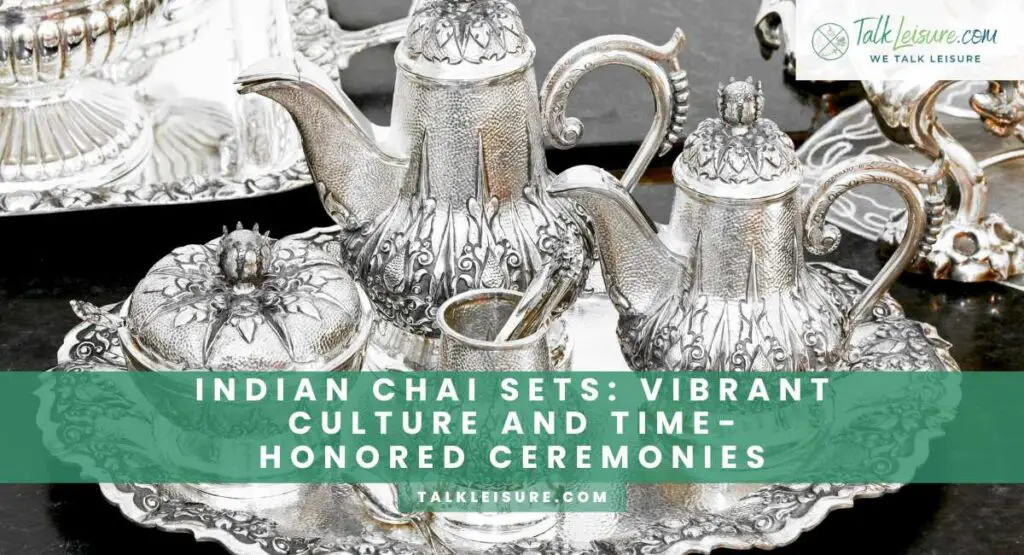
India, the land of spices and vibrant traditions, has a unique relationship with tea. From bustling markets to tranquil palaces, Indian chai sets are a reflection of a culture deeply intertwined with the art of brewing chai.
Chaiwallah Culture: Where It All Begins
In India, tea is more than a drink; it’s a social ritual. The local “chaiwallahs” serve up steaming cups of chai, spiced and sweetened to perfection. These sets often feature modest clay cups, known as Kulhads, adding a rustic charm to the act of brewing.
Silver Chai Sets: Royal Elegance
In regal households, chai takes on an opulent form. Silver chai sets, adorned with intricate designs, are a mark of aristocracy. These sets, often passed down through generations, bear witness to the grandeur of Indian traditions.
Masala Chai Glasses: The Street-side Elegance
The streets of India come alive with the aroma of masala chai. The humble glass cups, often adorned with vibrant patterns, hold the essence of centuries-old chai traditions. They’re not just vessels; they’re a glimpse into the pulse of India.
Indian chai sets are a celebration of diversity, flavor, and community. They tell stories of bustling markets, serene courtyards, and grand celebrations. In the next section, we’ll cross the English Channel, where tea sets take on a different form of elegance.
English Tea Sets: Elegance in Porcelain and Silver
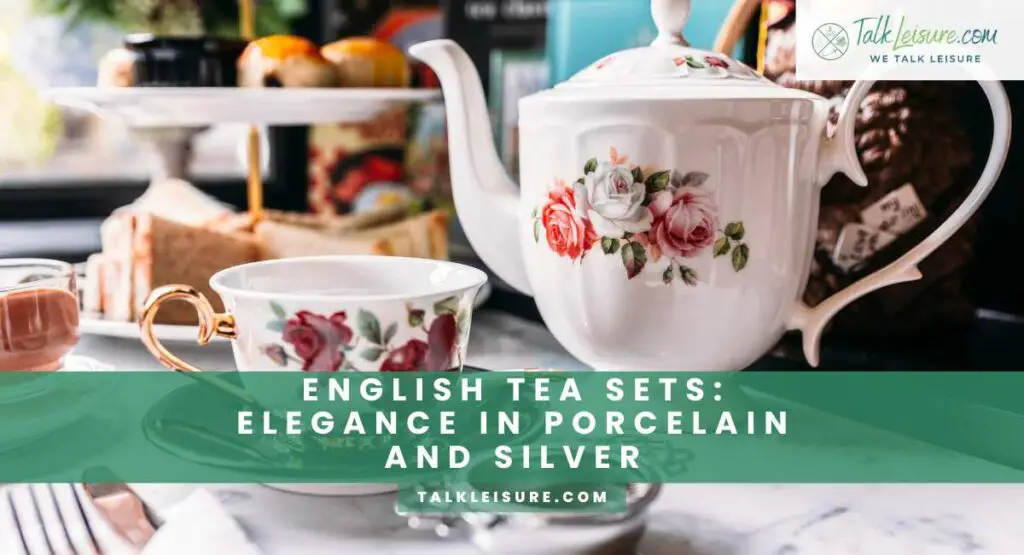
In the heart of the British Isles, tea assumed a refined and elegant character, becoming an integral part of daily life and formal gatherings alike. English tea sets, with their timeless beauty, bring a touch of sophistication to any occasion.
Bone China: Translucent Elegance
Bone china, celebrated for its translucent quality, became the canvas for exquisite tea sets. Delicate and light, these sets often bear intricate floral patterns and gilded edges. They graced afternoon teas in stately homes, adding an air of aristocratic charm.
Sterling Silver Sets: Opulence Personified
In grand households, silver tea sets became a symbol of opulence. Elaborate designs, often featuring floral motifs and scrollwork, were meticulously crafted by silversmiths. These sets were not just functional; they were heirlooms, passed down through generations.
Art Deco Influence: 20th Century Elegance
As the 20th century dawned, the Art Deco movement left its mark on tea sets. Geometric patterns, bold colors, and sleek lines became the hallmarks of this era. Art Deco tea sets exuded a modern, cosmopolitan elegance, reflecting the spirit of the times.
English tea sets, whether in bone china or sterling silver, carry with them a sense of tradition and refinement. They harken back to a time when tea was not just a beverage but a social event. In the next section, we’ll journey to the heart of Russia, where tea holds a place of honor in both tradition and extravagance.
Russian Tea Sets: Ornate Craftsmanship and Grandeur
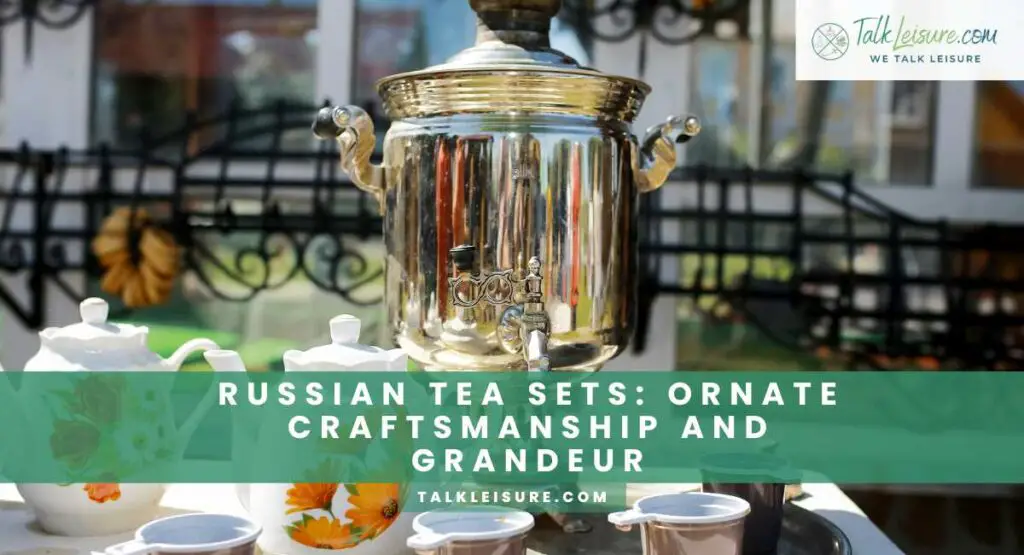
In the vast expanse of Russia, tea is more than a beverage; it’s a cornerstone of hospitality and culture. Russian tea sets, characterized by their opulence and intricate designs, reflect a society that celebrates both tradition and extravagance.
Samovar Rituals: The Heart of Russian Tea Culture
Central to the Russian tea experience is the samovar, a grand, ornate urn that keeps water hot for extended periods. The samovar, often adorned with intricate patterns and sometimes even gemstones, takes center stage in Russian tea ceremonies, embodying warmth and abundance.
Gzhel Porcelain: The Art of Blue and White
Hailing from the historic Gzhel region, Russian porcelain is known for its blue and white designs. Gzhel tea sets often feature intricate patterns inspired by nature, folklore, and traditional Russian motifs. Each piece is a testament to the country’s rich artistic heritage.
Imperial Russian Porcelain: Fit for Royalty
Imperial Russia’s porcelain factories, including the renowned Imperial Porcelain Factory in St. Petersburg, produced tea sets of unparalleled elegance. Adorned with delicate hand-painted details and often gilded with gold, these sets were fit for tsars and the aristocracy.
Russian tea sets are more than just vessels; they’re embodiments of Russian history and culture. They stand as a testament to a society that revels in the grandeur of hospitality. In the next section, we’ll journey to the vibrant markets of Morocco, where tea ceremonies are a celebration of hospitality and tradition.
Moroccan Tea Sets: Mint Tea Ceremonies and Exotic Appeal
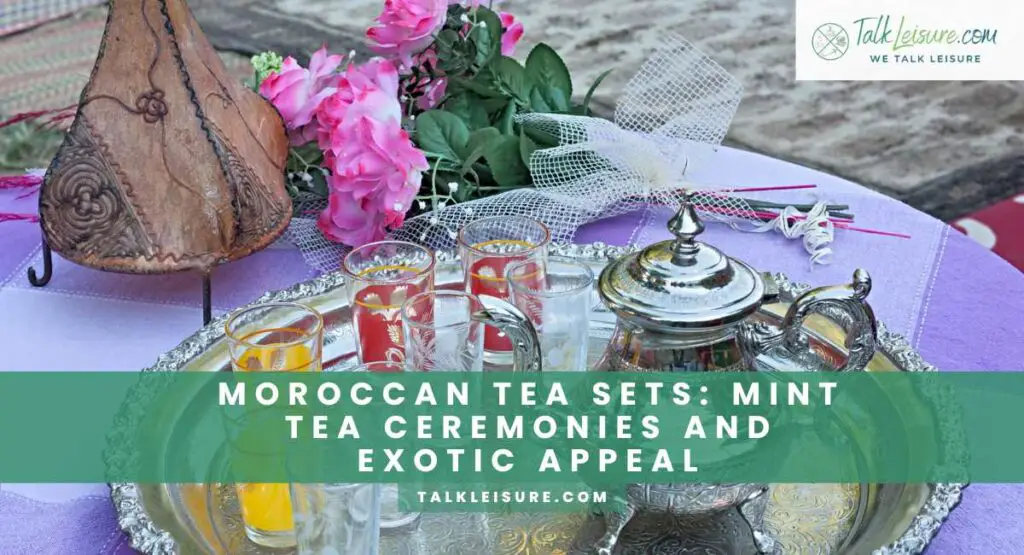
In the bustling markets and tranquil courtyards of Morocco, tea is more than a drink; it’s a gesture of hospitality and a celebration of tradition. Moroccan tea sets, known for their intricate designs and vibrant colors, embody the rich tapestry of Moroccan culture.
Mint Tea Ceremonies: The Heartbeat of Morocco
In Morocco, tea is a symbol of hospitality. The traditional mint tea ceremony, known as “Atay,” is a ritualized art, where green tea leaves are combined with fresh mint and sugar. Moroccan tea sets, often made of brass or silver, play a central role in this cherished tradition.
Brass Teapots and Colorful Glasses: A Feast for the Senses
Moroccan tea sets are characterized by their ornate brass teapots, often adorned with intricate patterns and sometimes even gemstones. The accompanying glasses, with their colorful designs and slender shapes, add a touch of exotic allure to the tea-drinking experience.
Moroccan Pottery: Craftsmanship in Clay
In addition to brass and silver, Morocco boasts a rich tradition of pottery. Handcrafted clay teapots and cups, often featuring traditional Berber designs, offer a rustic charm that complements the opulence of metal tea sets.
Moroccan tea sets transport us to the vibrant streets of Marrakech, where the air is perfumed with the scent of mint and the sound of pouring tea is a melody of hospitality. In the next section, we’ll explore the modern innovations in tea sets that blend tradition with contemporary design.
Conclusion
As we conclude our tour of the world’s most beautiful and unique tea sets, we find ourselves in awe of the artistry, culture, and history encapsulated in each vessel. From the delicate porcelain of China to the opulent grandeur of Russia, every tea set tells a story.
These sets are more than mere vessels; they are embodiments of traditions, symbols of hospitality, and conduits of shared moments. So, the next time you cradle a teacup in your hands, remember that you hold more than just tea; you hold a piece of a global legacy, a testament to the enduring beauty of human creativity.
Frequently Asked Questions
- Which country is number one in tea?
China is the largest producer and consumer of tea in the world. It has a long history of tea cultivation and is renowned for its diverse range of teas, including green tea, black tea, oolong tea, and more.
India is the second-largest producer and consumer of tea globally. It is particularly famous for its strong and flavorful Assam and Darjeeling teas, among others.
- Is Sri Lankan tea the best?
Sri Lankan tea, often marketed as “Ceylon tea,” is highly regarded in the global tea industry and has earned a reputation for its quality and distinct flavor profiles. It’s known for its bright, brisk, and aromatic characteristics.
However, whether Sri Lankan tea is considered the “best” is subjective and depends on personal taste preferences. Different regions and countries produce a wide variety of teas, each with its unique flavors, aromas, and characteristics.
For example, some people may prefer the boldness of Assam tea from India, the delicate nuances of Darjeeling tea, the smoky notes of Chinese Lapsang Souchong, or the refined elegance of Japanese matcha.
Ultimately, the “best” tea is a matter of individual preference. It’s recommended to explore teas from different regions and styles to discover what suits your own taste buds and preferences best.
- What is the most expensive tea in Asia?
The most expensive tea in Asia is Da Hong Pao (Big Red Robe) from China. Da Hong Pao is a highly prized oolong tea that originates from the Wuyi Mountains in the Fujian province of China. It is known for its complex flavors, rich aromas, and the rarity of the tea bushes from which it is harvested.
The price of Da Hong Pao can vary significantly based on factors like the quality of the leaves, the age of the tea bushes, and the specific location where it’s grown. Exceptional and authentic Da Hong Pao can command extremely high prices, with some rare and aged varieties being sold for thousands or even tens of thousands of dollars per ounce.


